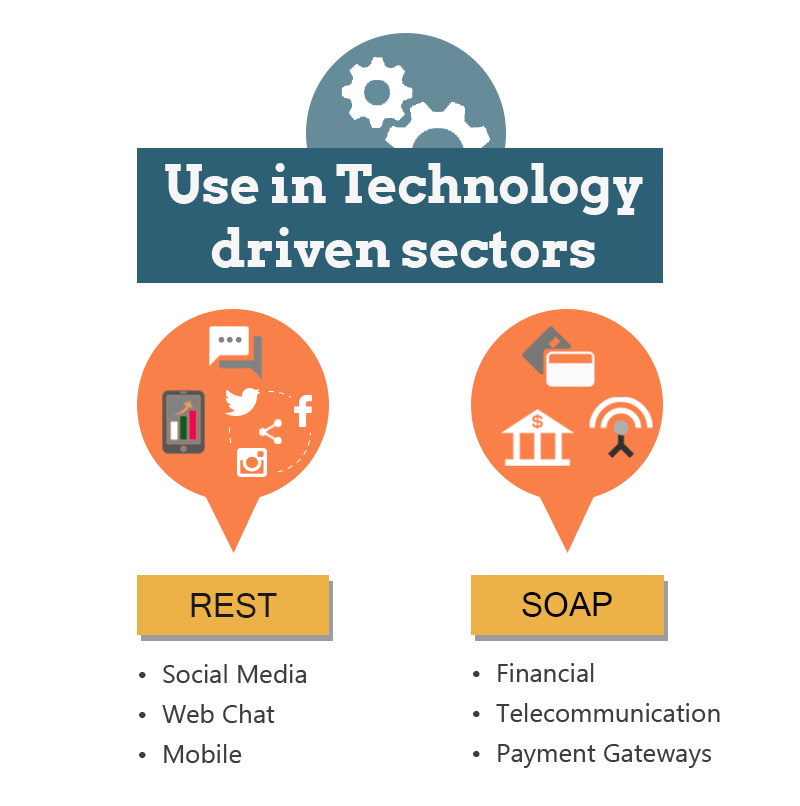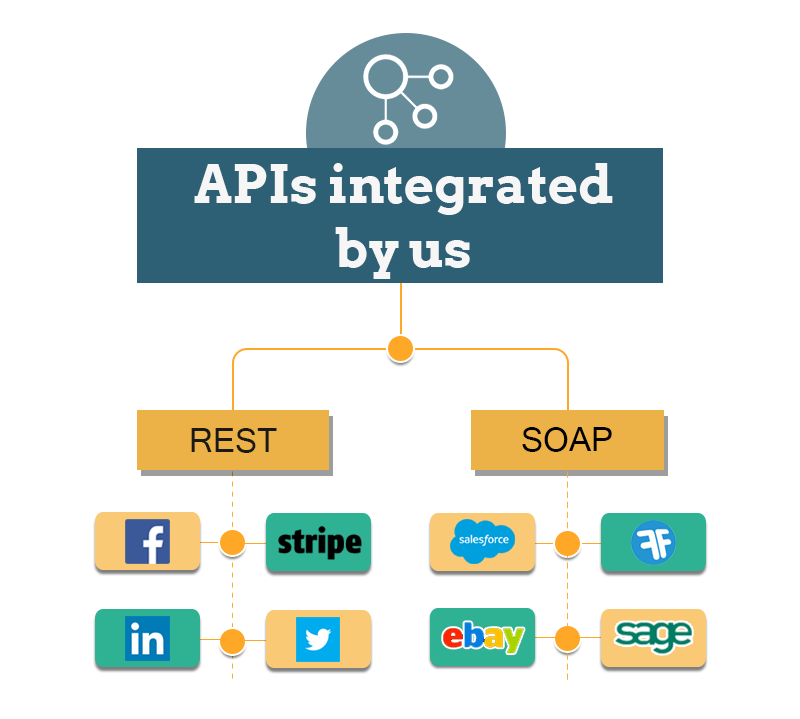

SOAP vs REST | Differences & Understanding the Future of API






With the growing adoption of smartphones, the last half of the decade has shown a tremendous increase in the popularity of mobile applications. It is estimated that in 2015, one billion smartphones will be sold and by 2017, $77 billion will be generated from 268 billion downloads. With these types of industry numbers, it becomes clear that mobile application development is not just another revenue generating stream, but a key factor in the success of the business.
Thus from a developer’s point of view, it becomes imperative to have a clear understanding of the different approaches that can be adopted to develop a web service. There are two main approaches for mobile development ie. Simple Object Access Protocol (SOAP) and Representational State Transfer (REST). It’s a general tendency to think the two as mutually exclusive, but in fact, they are not since SOAP is a protocol and REST is an architectural style. SOAP works on a standard set of rules based on XML (eg. HTTP) and finds its use in financial, telecommunication and payment gateways services. REST doesn’t employ any additional messaging layer creating a stateless service. It is usually used in social media, web-chat and other mobile services.
Coupling between the client and server is the major distinguishing factor between the two; In SOAP the linkage between client and the server is very rigid and any change from either side deems the contract null, whereas in REST, the protocol is not violated by such changes.

As SaaS product development continues to gain popularity, developers must choose between SOAP and REST for their API needs. By understanding the nuances of each, you can ensure that your application performs optimally.
True security requires authorization and integrity over and above authentication and confidentiality. As SOAP is based on standardised Web service security and thus better secured compared to REST which works on HTTP. But REST developers need not get disheartened as generating unique token and validation on each request can be a customised way to enforce user-level authentication.
Web service development, whether using SOAP or REST, demands strong data protection and access control security. Your chosen framework, like ASP.NET, significantly influences your app's security.
Security is an ongoing process that necessitates regular updates and patches for .NET web services, especially if you're using ASP.NET. To ensure robust security, consider hiring Dot Net developers with the expertise and experience to implement these measures effectively. They can also assist with security assessments, penetration testing, and code reviews for your SOAP and REST implementations.
SOAP-based applications have server side sessions and a stack of different handlers and parsers while REST bears minimal overhead on top of HTTP. It is critical in mobile based applications where the server is connected simultaneously to many devices and a lean mechanism is required. Thus in such cases REST becomes the obvious choice and if you encode your representations in JSON (Furthermore as opposed to XML) you will save many more bytes.
Nowadays smartphones users are tech-savvy and avoid applications which drain their mobile battery. As it has a real business impact if the mobile user can’t complete their work because the device needs to be constantly recharged. JSON is also easier to parse than XML, using less memory and less CPU. The more demands you make of the CPU the quicker you consume battery power and the shorter time you have between recharges. Again REST scores over SOAP in battery life.
As mobile usage grows every day, we should think on the scalability of an application. REST’s property of statelessness simplifies component implementation, improves performance tuning, and increases the scalability of pure server components.
The above discussion suggests growing popularity of REST due to ease of application, efficient use of the server, CPU and battery life. But SOAP is still reliable in terms of security which makes it useful in designing enterprise web applications (B2B) and applications which require payment options such as banking transaction which require security encryption on the data layer. Maruti Techlabs have been using both the technologies effectively. We have used REST in Stripe, Facebook. LinkedIn and Twitter based APIs and SOAP in Salesforce, Sage, Financialforce and eBay based APIs.
You can leverage Python as your programming language while integrating REST and SOAP APIs. Python is extensively used today for developing scalable applications because it integrates seamlessly with REST and SOAP APIs.
To implement this effectively, you'll need skilled and dedicated Python developers. They can accomplish this task by following scalability principles, using asynchronous programming and the correct libraries, optimizing database access, and harnessing cloud and containerization technologies.

Returning to the initial reference of ‘Disruptive Innovation’, where an innovation helps create a new market and value network and eventually disrupts an existing market and value network (over a few years or decades), displacing an earlier technology. So disruptive innovation allows a new, less skilled community to participate and do new things. This description ideally matches our topic, where REST-based applications are easier to make and gaining huge popularity. Many small business and mobile gaming apps can be made using REST by developers with low technical acumen, thus replacing SOAP as the favorable technique. The only thing that prevents SOAP from being outdated is the rigid coupling and security it offers. Thus, SOAP vs REST is a case of ‘Disruptive Innovation’ rather than ‘Innovator’s Dilemma’. Both web services have pros and cons, but it seems REST will quickly surpass its counterpart in the coming years.
As we continue to grow into a mobile-centric society, it's not surprising that mobile apps are at the center of the technology shift. Developing a mobile application can go a long way toward driving your company into the hands of new customers and future business success. Many start-ups have traced an exponential growth curve with their mobile-first approach. Apps for healthcare, fintech, and e-commerce sites have taken the industry by storm. Even small start-ups saw big success by hiring offshore mobile app developers from a reputed company like ours. If you're looking to build REST-based APIs for your mobile apps, you need a reliable partner for product service management. As a leading software product development service for startups, Maruti Techlabs offers comprehensive services to help you build, deploy, and manage REST APIs that can support your business goals. Contact us today to learn how we can help you succeed in this ever-evolving landscape.
To learn more about our expertise in software development Dallas businesses rely on, get in touch with our team today.


